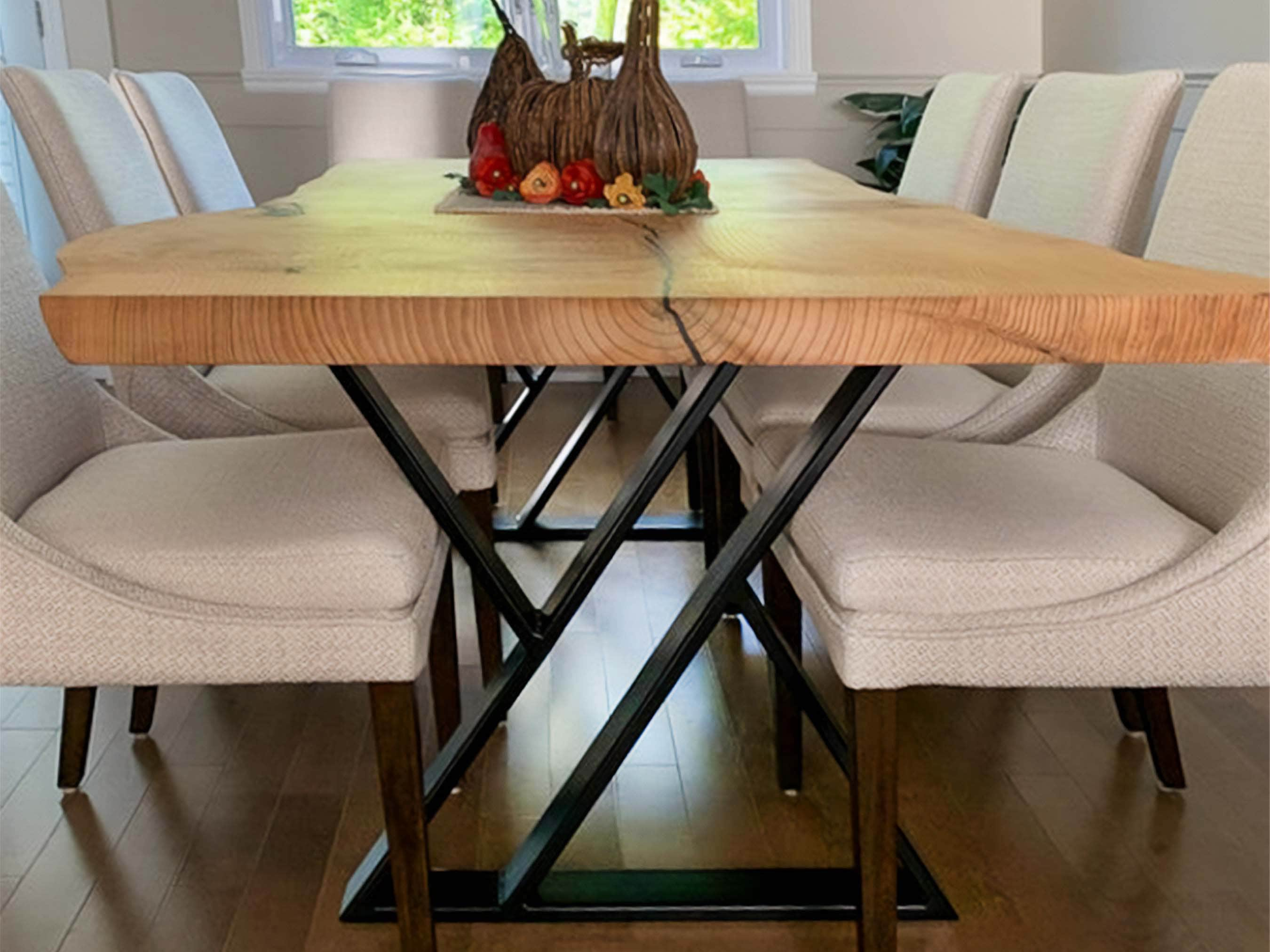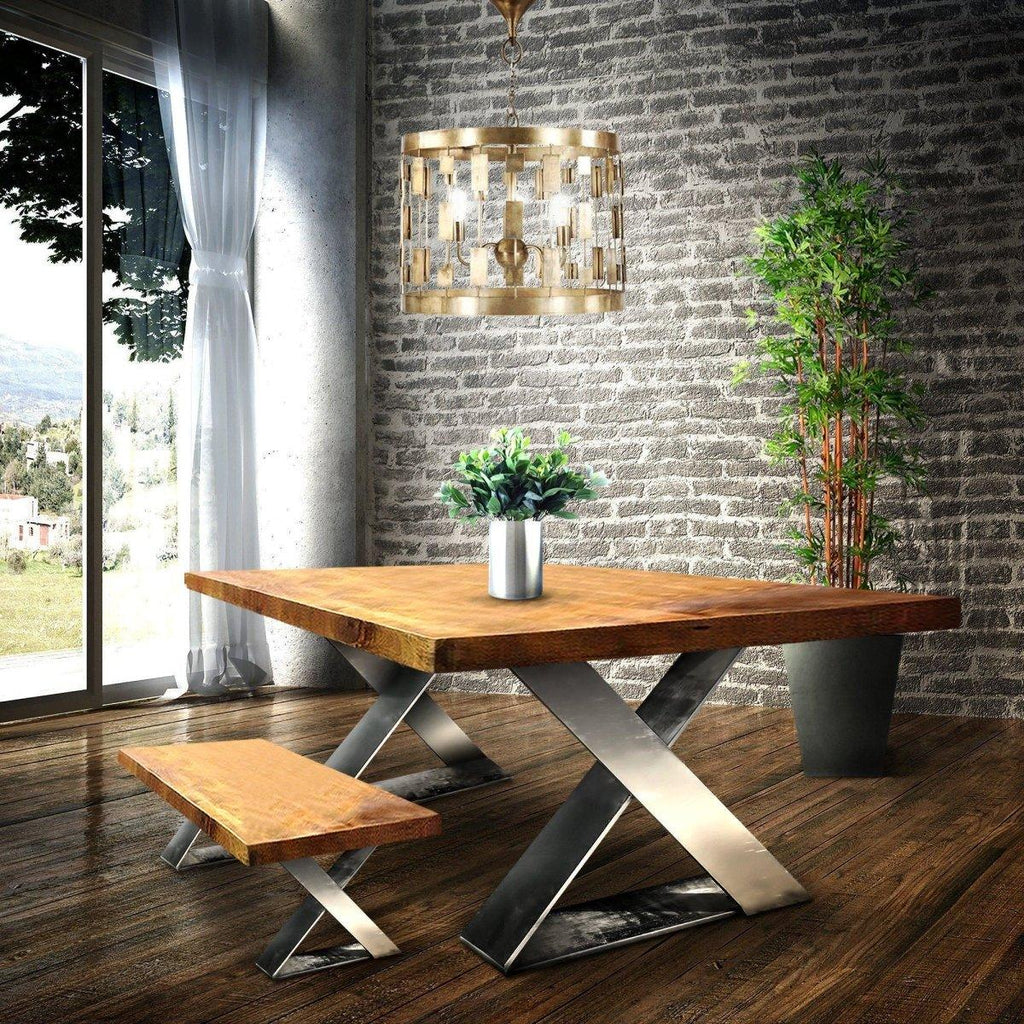Creative Ideas for Replacing or Refurbishing Your Dining Room Table Legs
Creative Ideas for Replacing or Refurbishing Your Dining Room Table Legs
Blog Article
From Typical to Modern: Locate the Suitable Dining Room Table Legs for Your Style
While traditional styles such as cabriole and turned legs evoke a feeling of timeless refinement, contemporary designs like hairpin and geometric options present a chance for striking visual rate of interest. As you take into consideration these elements, the concern stays: exactly how can you effortlessly incorporate these varied leg designs to create a harmonious eating experience?
Comprehending Table Leg Styles
The range of dining-room table leg designs can dramatically influence both the appearances and functionality of the space. Each leg style adds unique practical attributes and visual aspects, accommodating varied style preferences and usage requirements. Recognizing these styles is crucial for selecting the best eating table that lines up with your total indoor style vision.
For example, tapered legs use a tidy, traditional appearance that can enhance a room's elegance, while stand bases give security and optimize legroom, making them perfect for smaller sized rooms. Hairpin legs, a characteristic of mid-century contemporary design, introduce a commercial flair, allowing for a ventilated, open feeling. In a similar way, trestle legs stimulate rustic charm, offering robust support and a feeling of eternity.
Wood legs can bring heat and texture, whereas steel options usually communicate a smooth, modern vibe. Eventually, recognizing table leg styles is vital for creating a cohesive dining location that reflects individual style while ensuring usefulness and convenience.
Conventional Table Leg Options
When choosing dining area table legs, conventional options commonly symbolize classic elegance and workmanship. These layouts mirror an abundant heritage and a dedication to quality, making them ideal for those who value classic aesthetic appeals.
One of the most renowned standard leg designs is the cabriole leg, defined by its stylish curved shape. This design typically features attractive carvings and is most commonly discovered in Queen Anne and Chippendale furnishings. An additional prominent alternative is the turned leg, which boasts a collection of smooth, rounded shapes that supply a traditional appearance while keeping security.
Furthermore, the straight leg, while straightforward, uses a durable and unadorned structure that can mix seamlessly with a range of tabletop designs. For those attracted to ornate detailing, claw-and-ball feet legs stimulate a feeling of magnificence and can work as a magnificent focal factor in any type of eating room.
Finally, pedestal bases, although not strictly legs, provide an alternate conventional option that permits adequate legroom and can be perfectly sculpted. Each of these conventional leg styles adds to the overall setting of a dining-room, weding feature with aesthetic charm.

Modern Table Leg Styles
Modern table leg styles supply a varied range of designs that stress clean lines and innovative materials. These designs often prioritize functionality while functioning as striking focal factors within an eating area. Minimalist appearances are common, with legs crafted from products such as metal, glass, and crafted wood, which add to a airy and contemporary feel.
One popular layout is the hairpin leg, characterized by its slim, tapered structure that gives security without overwhelming the tabletop (dining room table legs). This design is often discovered in mid-century modern furnishings and can easily enhance numerous dining table forms. Another fad is making use of geometric forms, where legs might handle angular or asymmetrical types, including aesthetic passion and a touch of virtuosity

Mixing Designs for Unique Spaces
Frequently, home owners seek to produce unique dining spaces that mirror their individual design by mixing numerous layout elements. This method enables the incorporation of varied appearances, causing a harmonious yet distinct environment. Coupling a rustic wood table with sleek, contemporary steel legs can create an appealing comparison that raises the space's general charm.
Additionally, incorporating vintage table legs with contemporary table tops can stimulate a sense of background while keeping a modern perceptiveness. Such combinations not only showcase private taste however also encourage creativity, enabling property owners to curate a space that feels both personal and inviting.
Shade plays a vital duty in this blending blog procedure; choosing table legs that enhance or contrast with the existing shade plan can boost aesthetic passion. Whitewashed legs can soften the boldness of a dark table surface, developing a balanced visual.
Tips for Picking the Right Legs
Choosing the right table legs is important for accomplishing both functionality and aesthetic appeal in your eating room. Begin by taking into consideration the overall design of your space. Traditional settings take advantage of legs that feature complex makings or transformed designs, while modern rooms may require smooth, minimal designs.
Next, evaluate the height and stability of the legs. dining room table legs. Conventional table vary between 28 to 30 inches in elevation, so make sure the legs match this measurement for convenience. Furthermore, durable products, such as wood or metal, can enhance security and long life
Evaluate the leg form also-- alternatives include right, tapered, or pedestal styles. Straight legs supply a traditional appearance, while conical legs can add a touch of elegance. Pedestal bases offer sufficient legroom and are ideal for smaller sized rooms.
Verdict
In summary, choosing the perfect eating space table legs needs careful factor to consider of both conventional and contemporary designs. By balancing leg design, height, and product with the general decoration, a cohesive and welcoming ambience can be achieved.
The selection of eating room table leg designs can considerably affect both the aesthetics other and functionality of the area. Eventually, understanding table leg styles is necessary for creating a natural dining location that reflects personal style while making certain usefulness and comfort.One of the most famous conventional leg designs is the cabriole leg, identified by its graceful bent shape. Straight legs offer a timeless appearance, while tapered legs can include a touch of sophistication.In recap, selecting the optimal eating area table legs calls for careful consideration of both conventional and contemporary designs.
Report this page